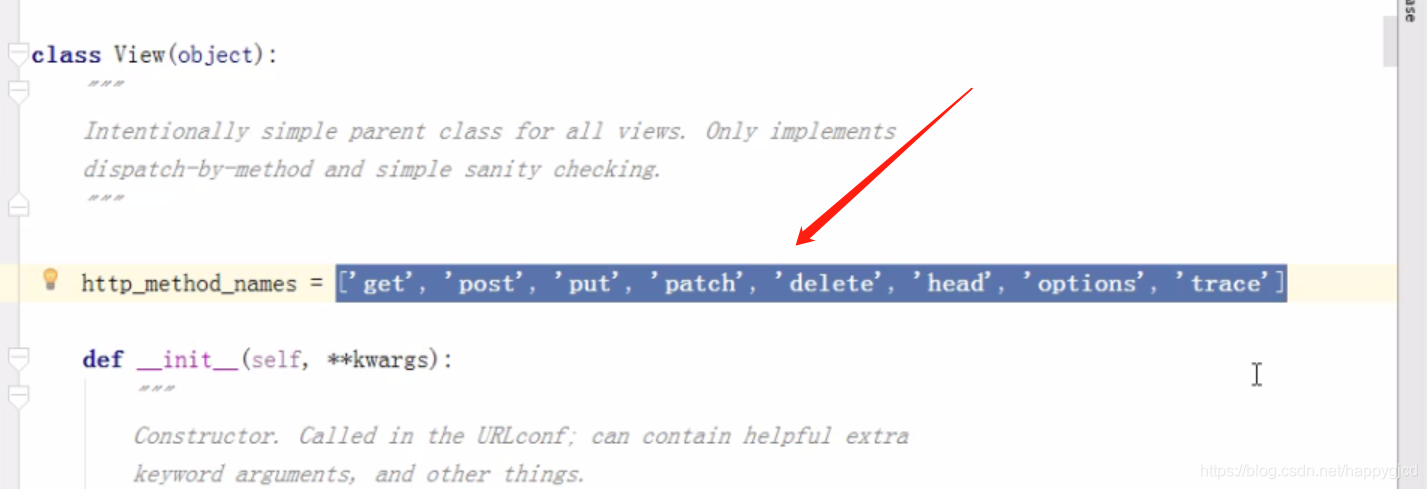文章目录
CBV的介绍以及写法
CBV即为class base view,我们先写一个类,然后再类里面根据自己的需求写post,get,put等方法,类似这样
view里面这样写
class Home(View):
def get(self, request):
print('get() is called')
return render(request, 'login.html')
def post(self, request):
print('post() is call')
return render(request, 'login.html')
url里面这样写,注意as_view()是固定写法

源码分析
当请求过来的时候,执行这个类的as_view()方法,执行这个as_view()会怎样呢,如果你发来的是get请求就会执行get方法,如果你发来的是这个post请求,就执行post,CBV里边可以执行的方法有这么多个

使用类视图的时候,请求过来到底发生了什么过程呢,看下图请听我慢慢分析哈。

请求里面包含请求头和请求行,当一个请求过来的时候,Django先拿他的URL进行匹配,然后拿请求的Request Method,拿到Request Method之后,先通过dispatch()函数进行反射,从而执行类里边对应的方法,如果请求中是GET就执行类里边的get()方法。先看看dispatch的源码。

可见是通过反射实现的。这个dispatch相当于帮我们做了一个反射的功能,我们可以改造这个方法

实验发现,这样子那么get()和post()都没法执行了。所以它是先执行dispatch方法,然后通过反射去执行其他类里面的方法的。所以我们可以先继承父类的dispatch方法,在对他进行改造,实现自定义

这样子和不写dispatch没有区别。

这样写就相当于自定义了。
最后吃一份as_view的源码
@classonlymethod
def as_view(cls, **initkwargs):
"""Main entry point for a request-response process."""
for key in initkwargs:
if key in cls.http_method_names:
raise TypeError("You tried to pass in the %s method name as a "
"keyword argument to %s(). Don't do that."
% (key, cls.__name__))
if not hasattr(cls, key):
raise TypeError("%s() received an invalid keyword %r. as_view "
"only accepts arguments that are already "
"attributes of the class." % (cls.__name__, key))

